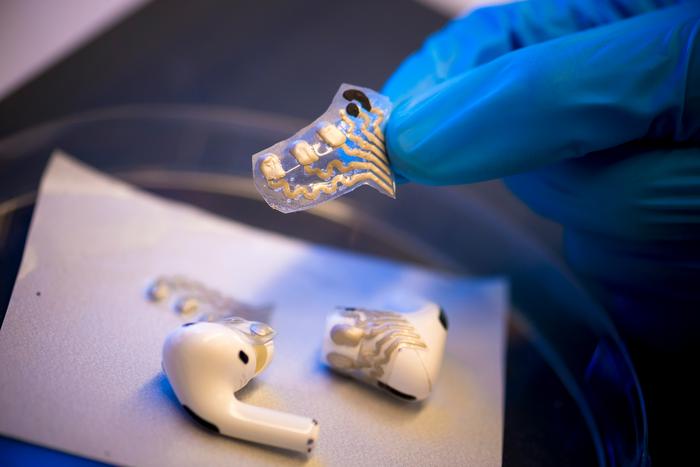
A pair of earbuds can be turned into a tool to record the electrical activity of the brain, researchers at the University of California San Francisco have learned.
They can also record levels of lactate in the body with the addition of two flexible sensors screen-printed onto a stamp-like flexible surface.
Gert Cauwenberghs, a professor in the Shu Chien Gene Lay Department of Bioengineering at UC San Diego, said:
“Being able to measure the dynamics of both brain cognitive activity and body metabolic state in one in-ear integrated device that doesn’t intrude on the comfort and mobility of the user opens up tremendous opportunities for advancing health and wellness of people of all ages, anytime and anywhere.”
The sensors communicate with the earbuds, which then wirelessly transmit the data gathered for visualisation and further analysis, either on a smartphone or a laptop.
The data can be used to monitor health long-term and to detect long-term neuro-degenerative conditions.
The sensors are a lot less cumbersome than state of the art devices currently used to sense the brain’s electrical activity and the body’s sweat secretions.
They can be used in the real world during exercise, the researchers found.
While in-ear sensing of several physiological parameters is not a new development, integrating sensing of brain and body signals in a single platform is.
The breakthrough was made possible thanks to the combined expertise of biomedical, chemical, electrical, and nano-engineers.
The researchers validated the data collected during the proof-of-concept study against data obtained from commercially available dry contact EEG headsets and lactate-containing blood samples.
The data the flexible sensors collected was just as effective.
The researchers foresee a future where neuroimaging and health monitoring systems work with wearable sensors and mobile devices, such as phones, earbuds to track brain activity and levels of many health-related metabolites throughout the day.
They also anticipate a future in which the capabilities of existing wearable audio devices, such as earbuds, can be considerably expanded to gather a much wider range of data.
Patrick Mercier, a professor in the UC San Diego Department of Electrical and Computer Engineering, said: “Earbuds have been around for decades, and in many ways were one of the first wearable devices on the market.
“This research takes important first steps to show that impactful data can be measured from the human body simply by augmenting the capabilities of earbuds that people already use on a daily basis.”
Image: Erik Jepsen/University of California San Diego





